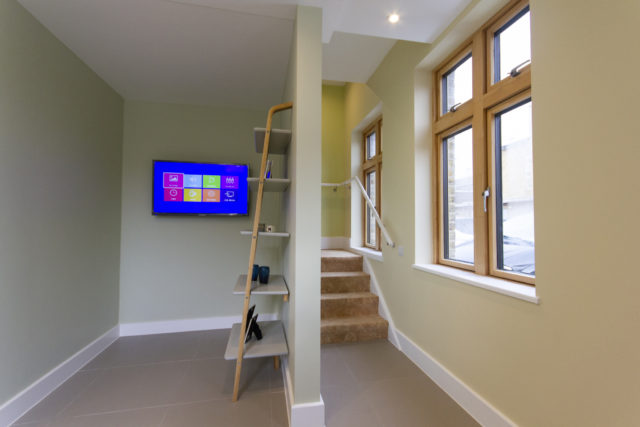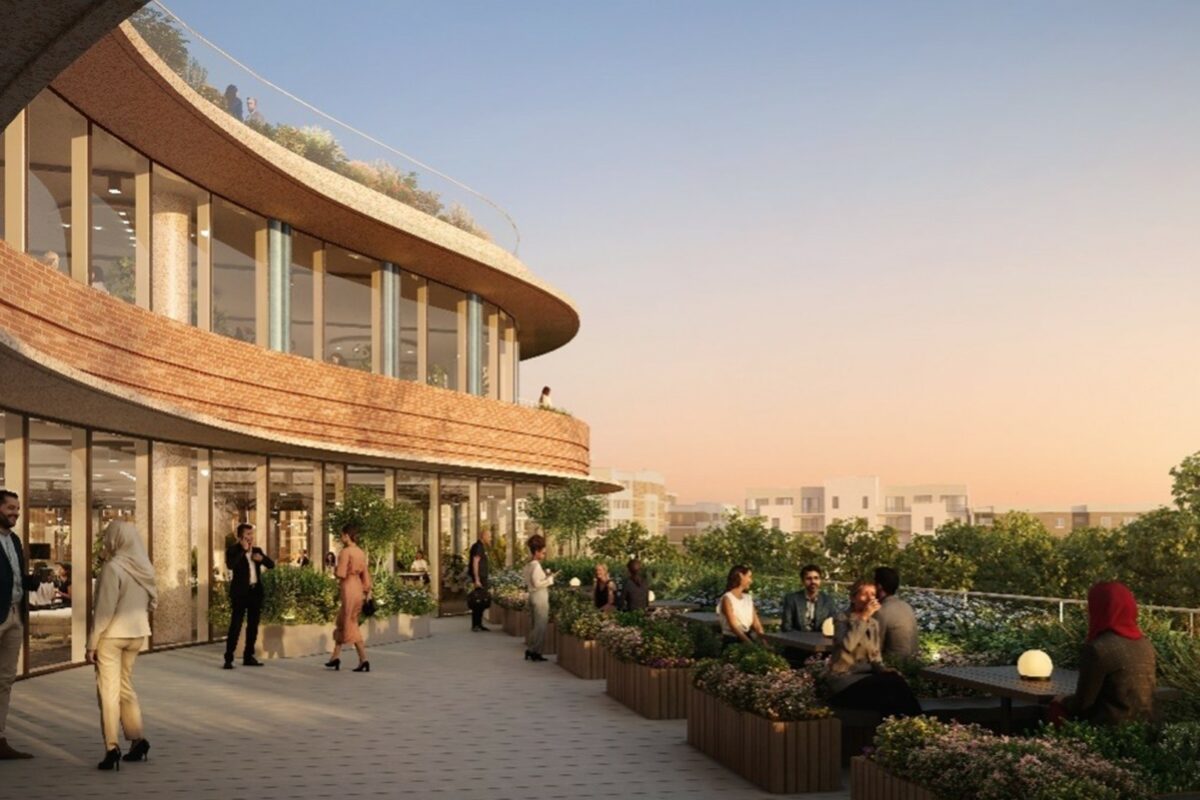The first phase of a new dementia-friendly home on BRE’s Watford Innovation Park, has been completed.
The building has been adapted to help educate housebuilders, carers and relatives on how to better support those living with dementia using design principles that are geared towards helping them to live in their own home for longer. This dramatically improves quality of life and reduces the cost of care.
Growing need
As dementia care costs families around £18 billion a year and affects about 850,000 people in the UK* (the figure is expected to rise to more than one million in the UK by 2025); the need for solutions is critical. Director of BRE Innovation Parks Dr. David Kelly comments, “We have worked with a multi-disciplinary team from the healthcare sector, architects, lighting experts, colour specialists, and building physicists to develop a unique approach to home adaptation for dementia. Issues such as accessibility, layout, physical support, the quality of daylight and the reflectance of all surfaces have been considered.”
Dementia care costs families around £18 billion a year
Developed in partnership by BRE – the leading building science research centre and experts from Loughborough University, the 100sqm Victorian house has been adapted to cater for different types and stages of dementia and to address day-to-day needs and identify the adaptations that can be made to enable those who are living with dementia, to live independently. The upper floor of the home has been adapted for the more advanced stages of dementia.
Personas in mind
The building design has been developed around the needs of two specific personas (or avatars), Chris and Sally. The design narrative describes how the features of the building have been adapted to support Chris and Sally as they age well at home.
BRE reports that more additions and enhancements will be made over the coming months to support the ongoing research projects which will identify key areas that could help the millions of people who are affected by dementia, in some way.

- Clear lines of sight and colour-coded paths through the home that help guide people towards each specific room
- Increased natural lighting, which is proven to help people stay alert during the day and to sleep better at night
- Automatically controlled natural ventilation to provide good indoor air quality
- Noise reduction features, to reduce stress
- Simple switches and heating controls, and safety sensors in high-risk areas such as the kitchen
- Homely, simple and familiar interior design to help promote rest and relaxation
“The home appears simple and straightforward, but every detail has been carefully designed to enable comfort, quality of life and the easiest and simplest navigation through the home for those with the condition. These measures will enable those with dementia to live at home for longer,” concludes Dr Kelly.
The £300,000 project has been designed by HLP Architects and is based on the ‘design for dementia principles’ previously developed by Dr Rob McDonald (Liverpool John Moores University) and Bill Halsall (HLP Architects).
Enjoyed this article? Find more articles on health here.
BRE: www.bregroup.com
Loughborough University: www.lboro.ac.uk
Content Team
Work in Mind is a content platform designed to give a voice to thinkers, businesses, journalists and regulatory bodies in the field of healthy buildings.




